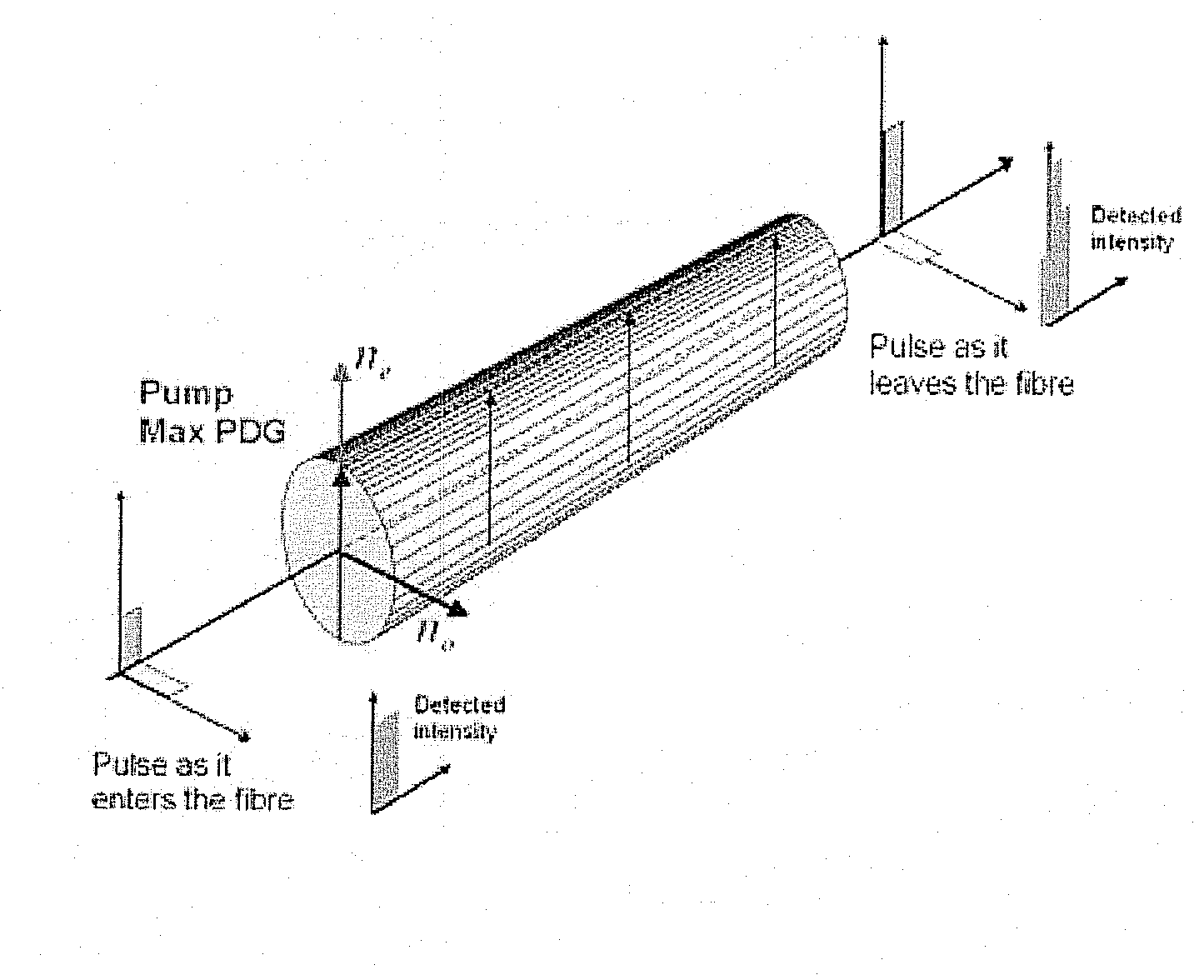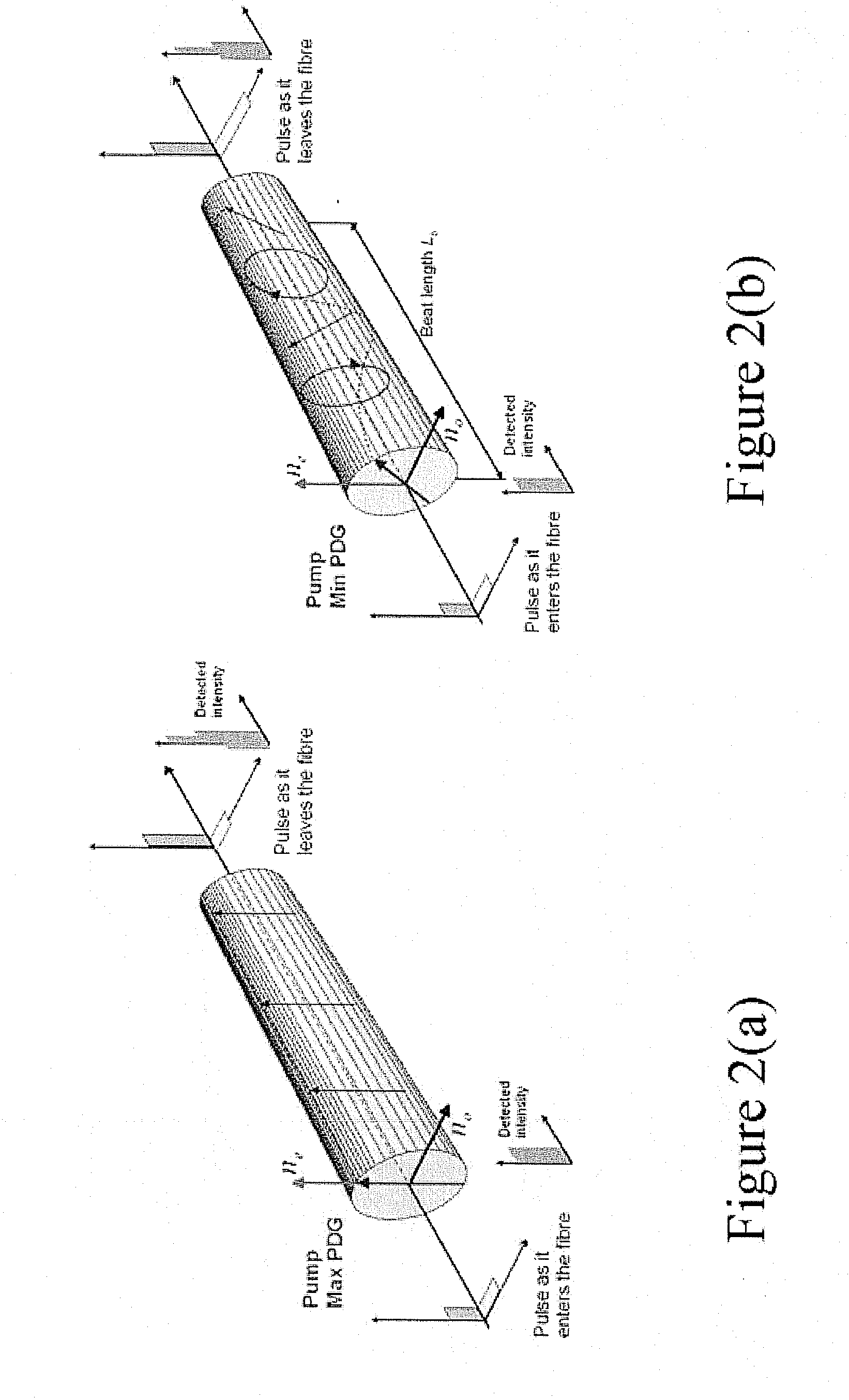Optical fiber raman amplifier
- Summary
- Abstract
- Description
- Claims
- Application Information
AI Technical Summary
Benefits of technology
Problems solved by technology
Method used
Image
Examples
first embodiment
[0037]In order to suppress both PDG and PMD, in a first embodiment a short length (L1=zn) of unspun optical fiber is contiguous with a much longer length of periodically spun fiber. For this embodiment, projections max> and min> are the same at the input of the length of periodically spun fiber and, therefore, do not contribute to the PDG over the length of this fiber for a wide range of spinning amplitudes—FIGS. 4(b) and 5(a). It means that for a two-section fiber, polarization dependent gain is the same as for a single section fiber without spin, i.e. it can be very small, FIG. 5.
[0038]Therefore for this case, the differential group delay (DGD):
√{square root over (Δτ(L)2)}=Dp√{square root over (L)}
where L is the fiber length and Dp is the polarization mode dispersion parameter (PMD), for a long-length periodically spun fiber is much less than DGD for a short section of fiber without spin. Thus, the SIRF for two-sections of long-length fiber is approximately equal to the SIRF of th...
second embodiment
[0040]In a second embodiment the optical fiber has an impressed spin profile given by 2A0π f0 cos(2π f0z)(1−exp(−z / L1)).
[0041]In each case z is the direction along the drawn fiber, A0 is the maximum spin amplitude, and f0 is the spin frequency. Furthermore, in each case L1 is at least approximately equal to nT / 2 (e.g. within 10% of nT / 2), where n is an integer and T is the period of spatial oscillation of the pump-to-signal state of polarization projections.
[0042]In these embodiments f0Lb=3 and Lb=8.17 m. In the first embodiment, a figure of n=5 is chosen as the effect of the estimation of T is less than if n were equal to 1, but balanced against keeping the length of the unspun section relatively short vis-à-vis the spun section to minimize Dp for the combined fiber.
[0043]To verify the method of simultaneous mitigation of PMD and PDG, one can use the model of PMD in spun fibers disclosed by A. Pizzinat, B. S. Marks, L. Palmieri, C. R. Menyuk, and A. Galtarossa, “Influence of the mo...
PUM
 Login to View More
Login to View More Abstract
Description
Claims
Application Information
 Login to View More
Login to View More - R&D
- Intellectual Property
- Life Sciences
- Materials
- Tech Scout
- Unparalleled Data Quality
- Higher Quality Content
- 60% Fewer Hallucinations
Browse by: Latest US Patents, China's latest patents, Technical Efficacy Thesaurus, Application Domain, Technology Topic, Popular Technical Reports.
© 2025 PatSnap. All rights reserved.Legal|Privacy policy|Modern Slavery Act Transparency Statement|Sitemap|About US| Contact US: help@patsnap.com



